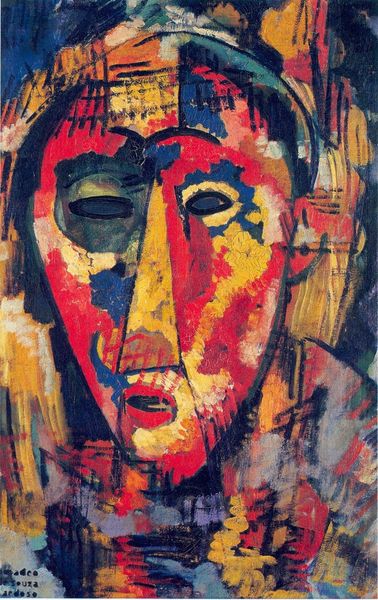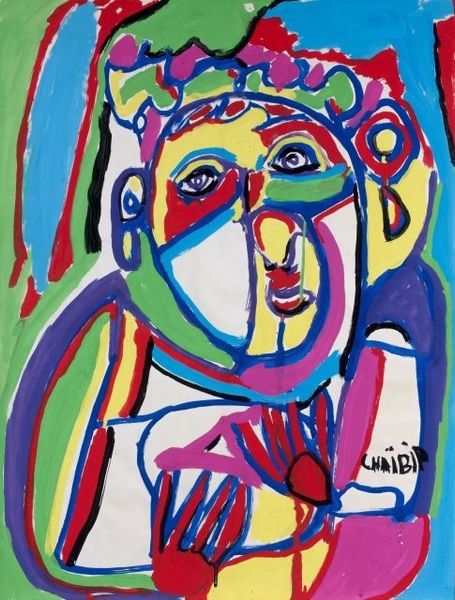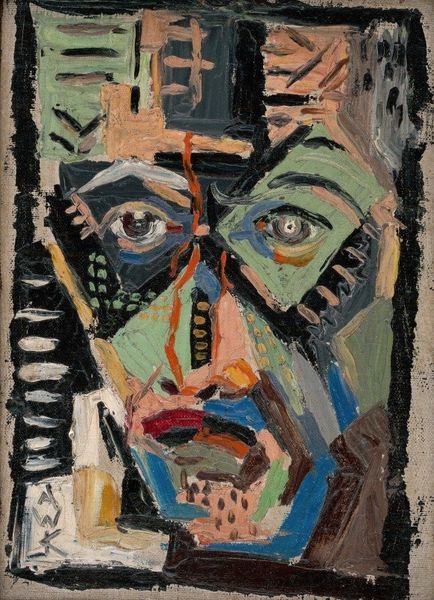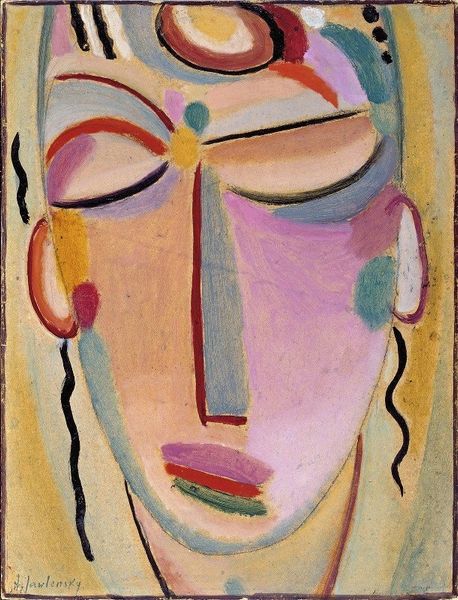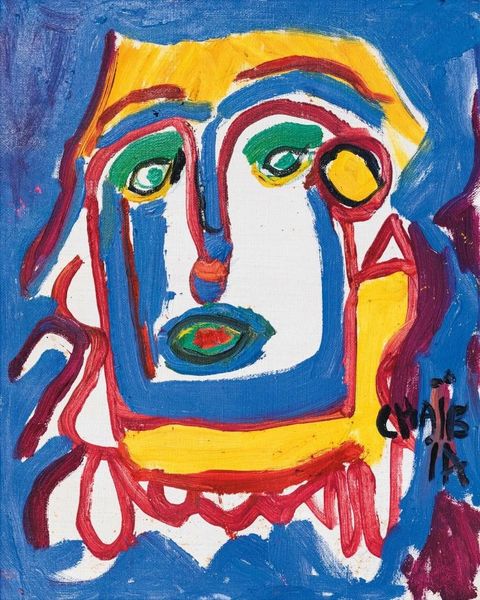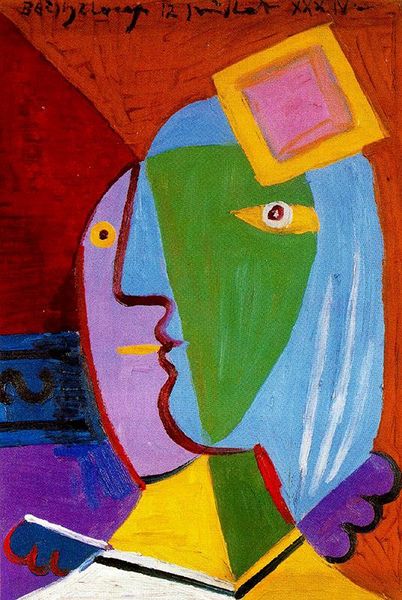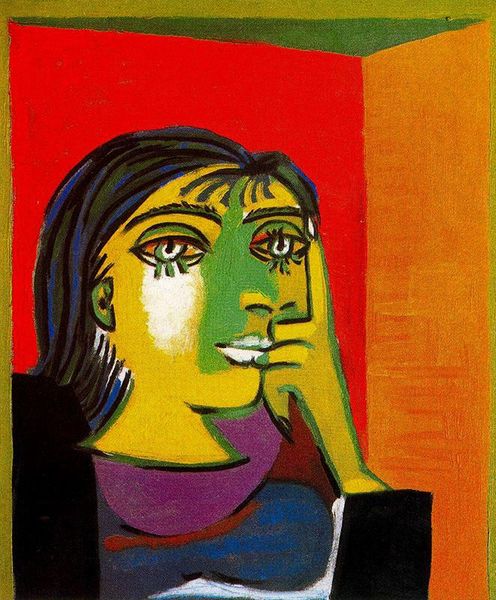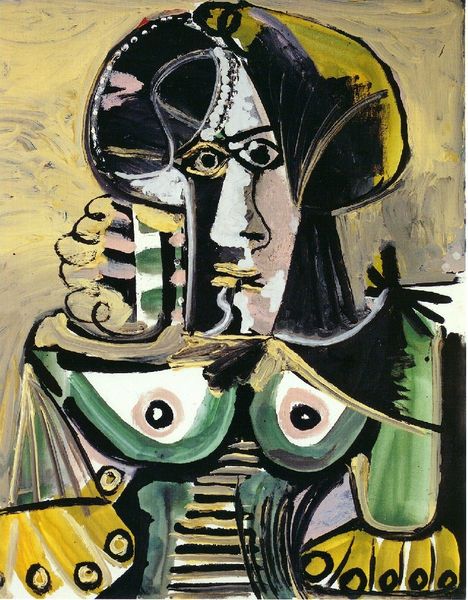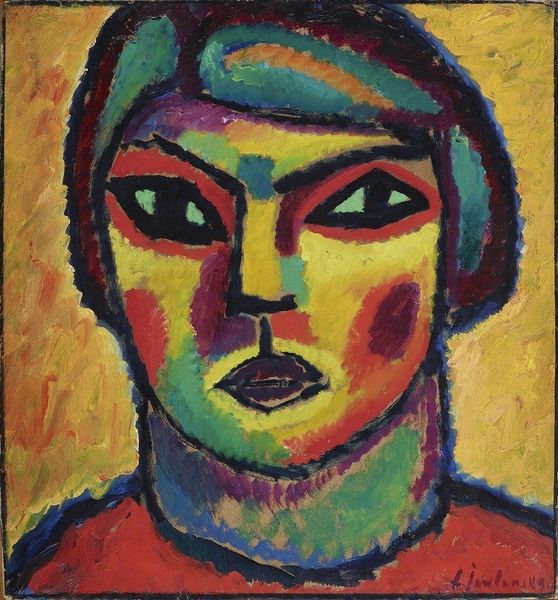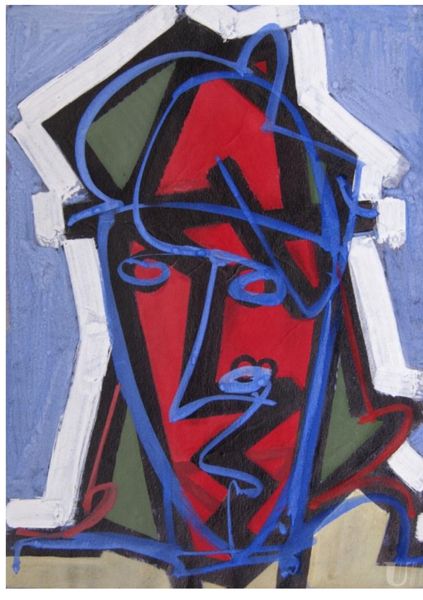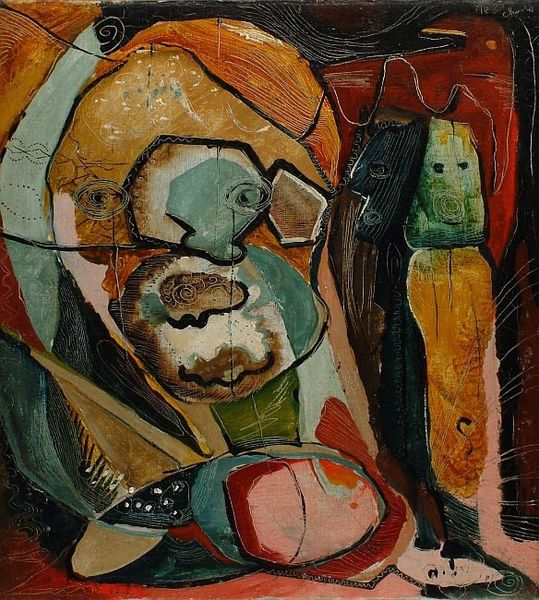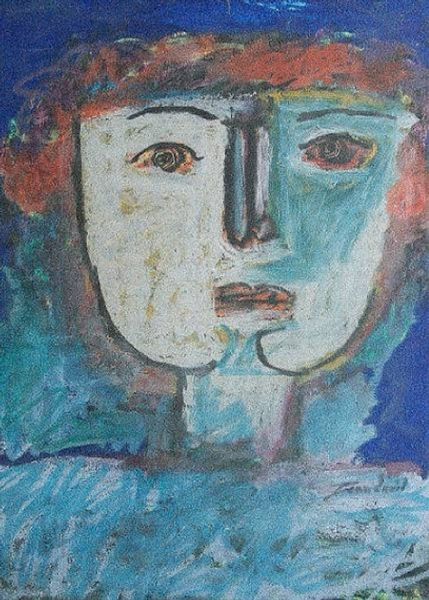
Copyright: Public domain
Editor: Here we have Arshile Gorky's "Bound in Sleep," painted in 1925 with oil. The heavy layering of paint is the first thing that struck me. The subject's eyes are closed, but it doesn't feel peaceful exactly. How do you interpret this work? Curator: Immediately, I'm drawn to the materiality of the paint itself. The thick impasto isn't just about creating form; it's a record of Gorky's physical engagement with the work. Consider the historical context: industrialization was rapidly changing the landscape, creating a clear class division in workforces. This act of building the image layer upon layer can be read as labor. Do you think there’s a commentary here on the value – or devaluing – of physical labor? Editor: I never thought about it that way! The intense build-up makes it feel almost sculptural, like he’s wrestling with the material. How would that relate to the subject of sleep, though? Curator: Think about sleep not just as rest, but as a state of being acted upon – a passive state. Gorky, through his active manipulation of the oil paint, subverts that passivity. He’s not merely depicting sleep; he’s constructing it, forcing it into being through a deliberate and labored process. Notice, too, the colors and their source: can they be seen as byproducts from industrial manufacturing? What kind of mood would the introduction of such pigments add to this depiction of sleep? Editor: I see what you mean. It’s like he’s binding the subject within the materials themselves, which completely reframes how I understand the title now. Thank you! Curator: And thank you. Considering art in relation to materials and the labor invested to manipulate them, sheds new light on artistic creation.
Comments
No comments
Be the first to comment and join the conversation on the ultimate creative platform.
